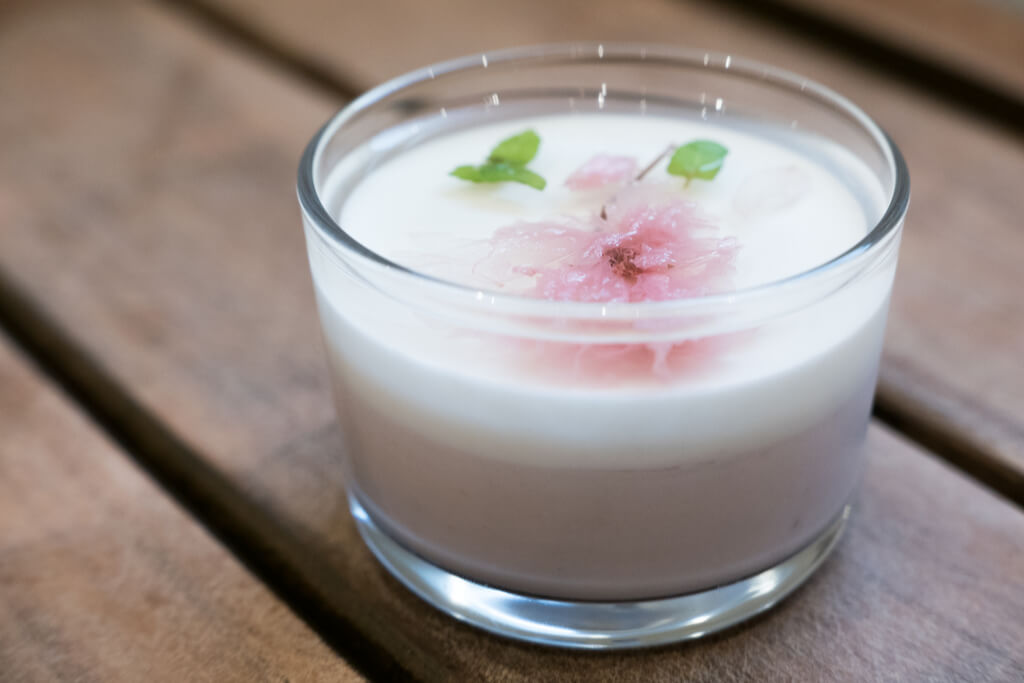For many people, the words ‘Japanese pudding’ make them think of Mt. Fuji-shaped yellow pudding topped with a caramel sauce. However, Japanese milk pudding is just as delicious with a simpler and lighter taste. It is a dessert that visitors fall in love with, and Japanese people living abroad often miss.
But what is the difference between the two puddings? Let’s explore what Japanese milk pudding is and how to make it so you can enjoy it in the comfort of your own home.
Love experiencing Japan through sweet treats like milk pudding? Sakuraco ships delicious traditional Japanese snacks, teas, and treats perfect for a Japanese teatime straight to you.
Table of Contents
ToggleWhat is Japanese Milk Pudding?
Japanese milk pudding is just as it sounds. It’s a pudding-type dessert made with milk, sugar, and gelatin. Because of it’s simple milk-based recipe, it’s lighter than the egg-based Japanese custard pudding, or purin. Also, compared to the often light toppings of milk pudding, custard pudding is always either topped with a caramel sauce or has caramel sauce at the bottom.
With a taste very similar to ice cream, milk pudding is a much lighter dessert, similar to tofu pudding, and is widely available at places like convenience stores and supermarkets. Plus, thanks to its simplicity, it’s very easy to make at home.

Hokkaido milk pudding is a slightly higher-class version of this already delicious dessert. Hokkaido milk is famous all across Japan for its delicious and fresh taste, and is used for a variety of Japanese products like Japanese milk bread (or Japanese sweet bread) and butter miso ramen. This milk, when used in pudding, only enhances its creamy texture and milky, ice cream flavor.
Different Ways to Add Flavor
Although most people enjoy milk pudding as it is, it is always possible to add extra layers to the dessert with some delicious additions. Just like the recipe we will show you today, many people add vanilla extract to their recipes – even most Japanese recipes add it. With a dish that already tastes like ice cream, adding vanilla will create a vanilla ice cream flavor.
Fruit toppings are also a common addition to this Japanese sweet. Fruits that are popular in Japan tend to find their way on top of Japanese milk pudding either as is or with a layer of jelly. Strawberries, melon, kiwi fruits, and cherries are just a few of the fruity options available to you.
Other toppings that can add a bit more complexity to your dessert are flowers, flower jellies, or black sugar syrup. Around cherry blossom season, the tiny pink flowers find their way onto milk pudding for a high-class dessert look. However, other edible flowers are totally okay as well.

Mint is also a common topping for milk pudding as it adds a bit of freshness to the dish. Another delicious option is syrup made from Okinawa black sugar. Much like the combination of bubble tea and this syrup, black sugar syrup adds a sweet, rich, and slightly smoky flavor similar to caramel.
Now, enough about the dish itself. Let’s learn how to make it with an easy step-by-step pudding recipe.
Japanese Milk Pudding: An Easy How-to Recipe & Guide
You’ll Need…
- 500 ml Whole (or full-fat) milk
- 50 ml Heavy cream
- 3 tbsp Granulated sugar
- 2.5 tsp Gelatin powder
- 0.5 tsp Vanilla extract (optional)
- Small containers (small bowls, jars, etc.)
- Tips: For those with milk-sensitive stomachs, one option is to swap the whole milk out for a milk alternative. Almond milk, oat milk, or soy milk work just fine. However, if you use these alternatives, reduce the volume of the milk alternative and increase the amount of heavy cream by a tiny bit to compensate.

Instructions
- Mix the milk, cream, sugar, and vanilla extract in a small saucepan (but not too small). Sprinkle the gelatin over the top and stir the mixture with a whisk until the gelatin is almost dissolved.
- Put the mixture over low to medium heat. Using your whisk, continuously stir the mixture until the gelatin and sugar have completely dissolved. This should only take about two or three minutes after it has heated up. (You don’t want it to simmer or boil).
- Once the gelatin is dissolved, remove from the heat and pour the mixture into your small containers. (Each container should be big enough to hold a single serving for your convenience).
- After pouring the pudding mixture, place your containers in the refrigerator so that they can chill and set. (This can take between 4 and 8 hours). If you want to use a chilled jelly topping, don’t forget to put it on at this stage. Also, for a perfect presentation, use a toothpick to pop any bubbles that may form.
- And you’re done. Once they’re chilled, they are ready to eat. You can eat it as is, or put your favorite topping on and enjoy.
Now that you know how to make Japanese milk pudding, feel free to try it. It will make a great dessert, or even afternoon snack, for you and anyone else to enjoy.










